You might think that after our high-altitude, 50-mile (80 km) trek to Machu Picchu, we would be ready to retire our hiking boots and throw them into the campfire. Not so fast! As further punishment, we endured an eleven-hour bus ride to the city of Huaraz to hike to even loftier heights.
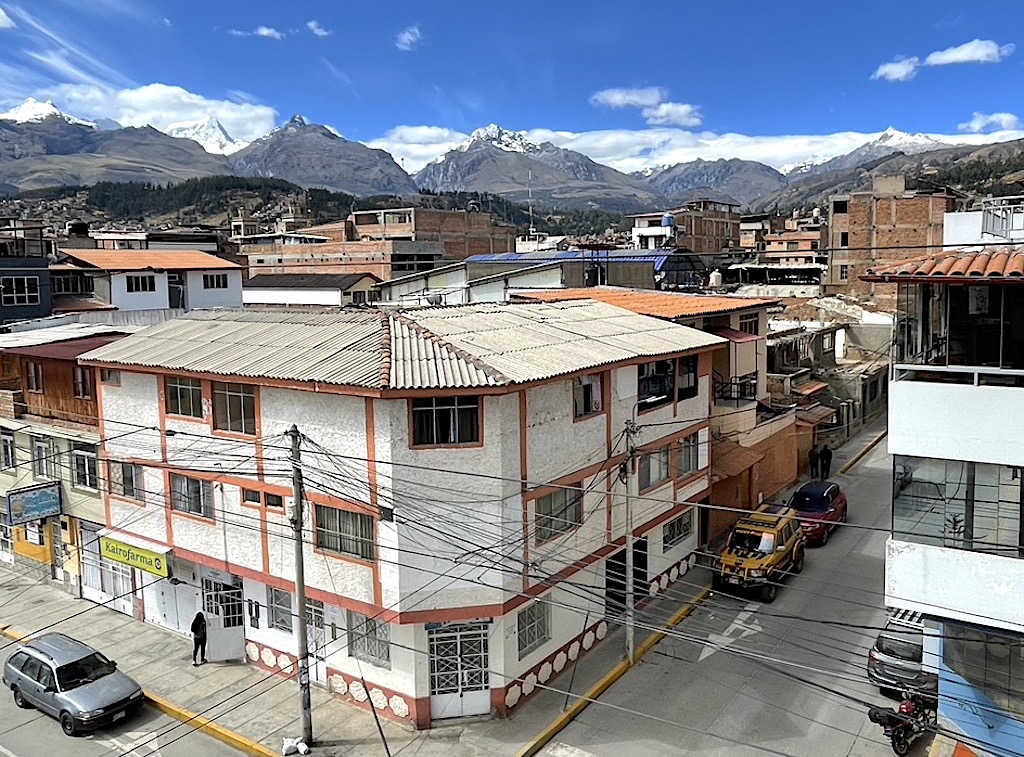
Huaraz is considered the Andean adventure capital of Perú and ideal base for exploring the Cordillera Blanca (White Range), the highest altitude and most expansive tropical mountain range in the world. Clearly visible to the north of Huaraz soars Mount Huascarán, the highest peak in Perú and the earth’s tropics.

On May 31, 1970, the Great Peruvian Earthquake, the most lethal earthquake in the recorded history of the western hemisphere, struck the Cordillera Blanca and destroyed 90% of the city of Huaraz. The earthquake also destabilized a large mountain glacier on the north peak of Huascarán, triggering the deadliest avalanche in world history.

In reverence to the tectonically ferocious Cordillera Blanca, our initial hike was up to modest Lake Wilcacocha, located just outside the Huaraz city limits. The rural path led us up through small pastoral villages, followed rushing surface water irrigation channels, and skirted numerous small agricultural plots of corn and golden fields of high-altitude winter wheat.

From the edge of diminutive Lake Wilcacocha, the entire snowy range jutted out of the earth like a jawbone of whitened incisors. From this panoramic vantage point, we admired more 20,000-foot (6,100 m) glaciated mountaintops than anywhere outside of the Himalayas.

The next day, we infiltrated the alpine terrain on a day-hike to Laguna 69, the most popular trail into the Cordillera Blanca. Following a tumbling crystalline stream, the strenuous six-hour roundtrip climb skyrocketed past gargantuan granite outcrops and a string of cascading waterfalls plummeting overhead.
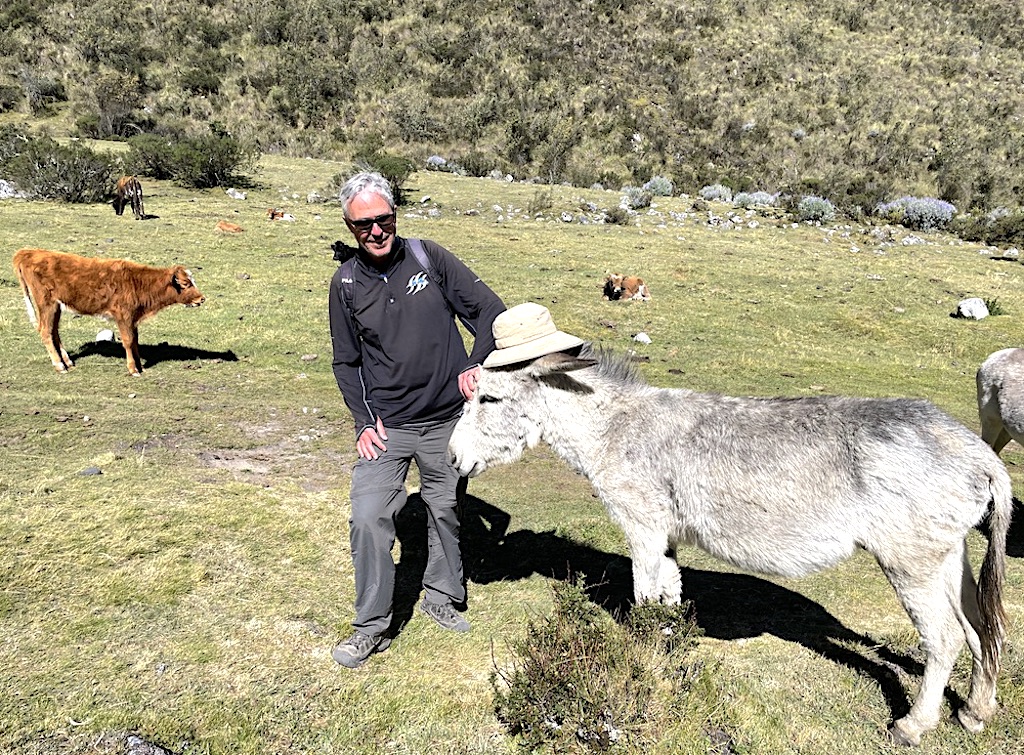
Proceeding up the trail, the pointed peaks of the Cordillera Blanca and their hanging mountain glaciers emerged in sharp focus. To our surprise, we passed herdsmen and their docile livestock feeding on the high mountain grasses. One especially gentle donkey agreed to wear my hat and pose for a photo, in exchange for a scratch behind his ear.

After spiraling up the trail, we eventually reached Laguna 69 at a final altitude of 15,092 feet (4,600 m). In the thin high-mountain air, we savored the sparkling view of this glacier lake, its turquoise blue reflection, and glacier-carved mountain backdrop.
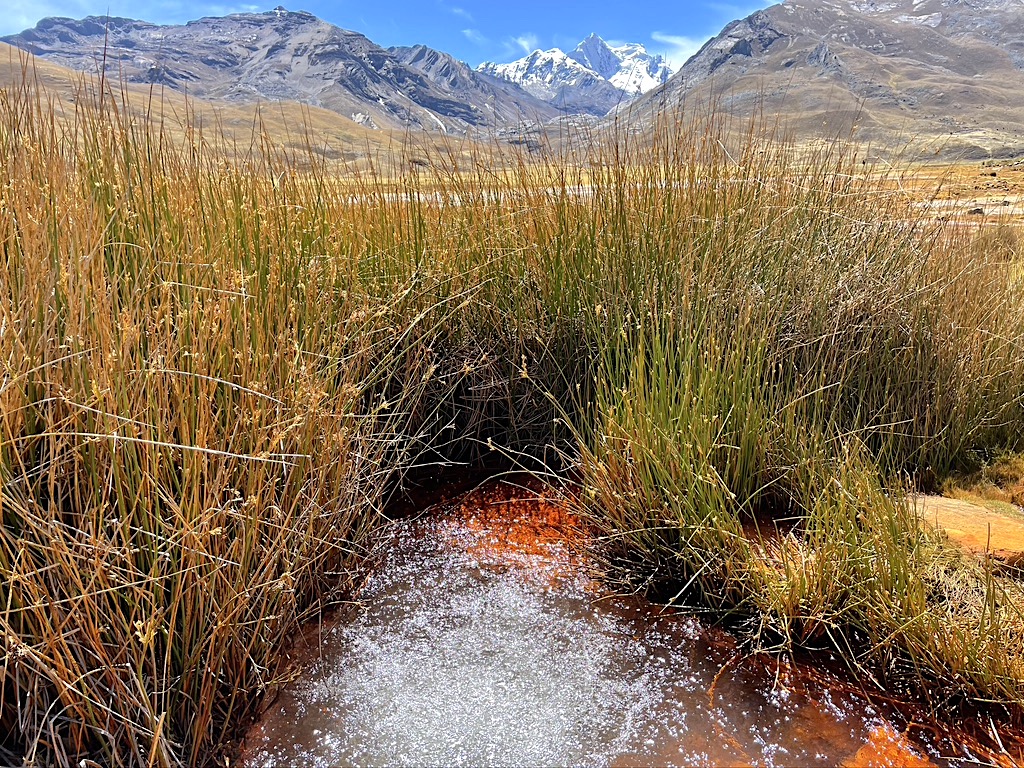
The following day, we broke our personal high-altitude hiking record with a short 40-minute stroll up to the Pastoruri Glacier. To reach the trailhead, we traveled from Huaraz by tour van on one of Perú’s highest roads. Flourishing in this strange high-altitude terrain, we passed effervescent springs and a grove of giant bromeliads.

Standing beside this dissolving and rapidly retreating mountain glacier, we had achieved an ultimate elevation 16,400 feet (5,000 m). We had never before experienced this high an altitude. Short of breath and ignoring our throbbing heads, we inhaled the rarefied air amidst the stark mountain landscapes, while hiking even higher in Huaraz.
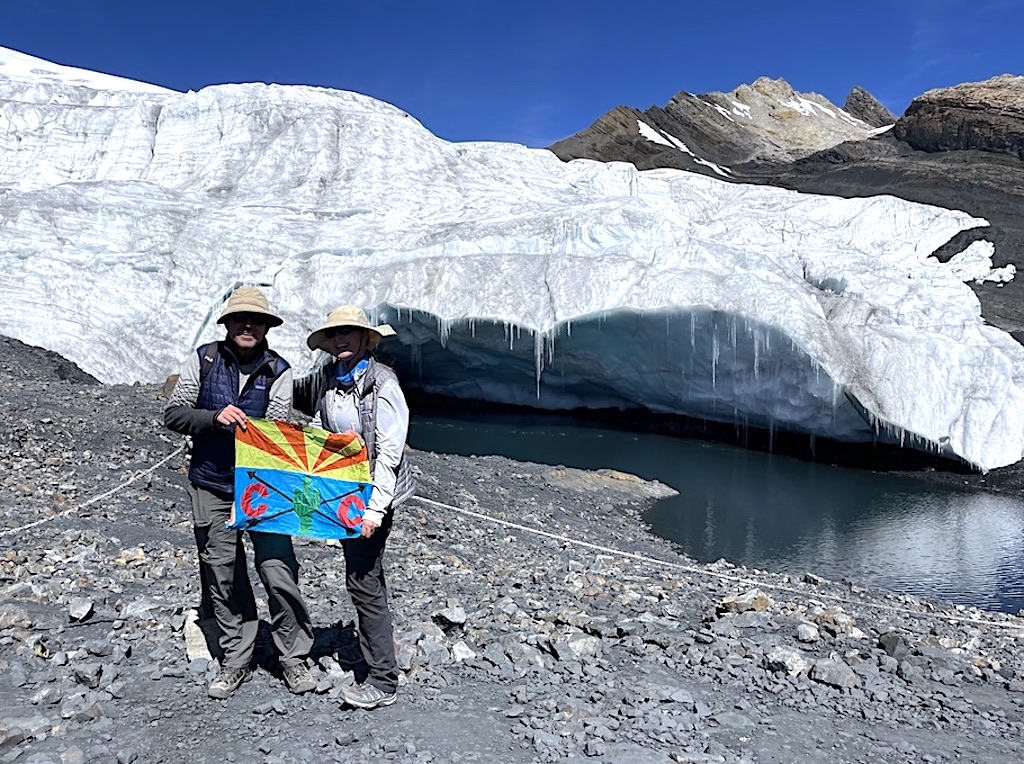
Blogger’s Note: This week, we returned home to Arizona USA after wrapping up our two-month trip in Perú. During our visit, we were captivated by Perú’s fascinating cultural identity and stunning natural scenery. Now, we plan to rest at home for a couple of months before embarking on our next month-at-a-time travel adventure. In the fall, we are planning to take another two-month trip. This time to an even higher altitude hiking and trekking destination
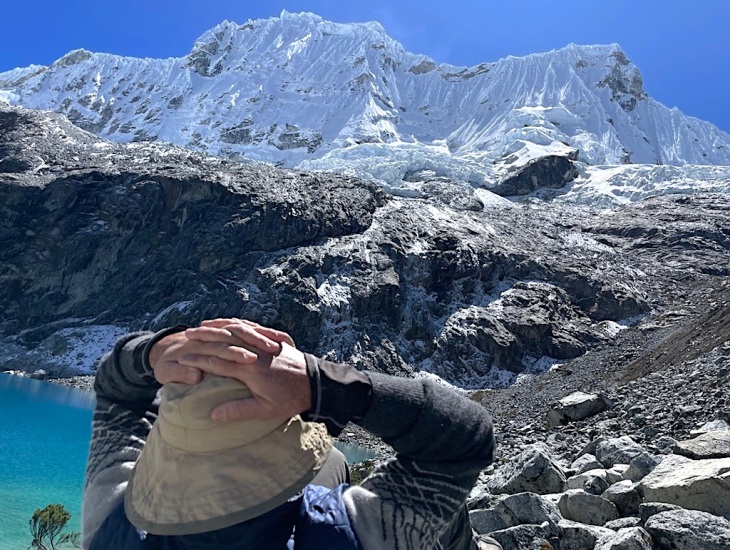
A fantastic trip, capped by a climb to over 16,000 feet. By the way, I have no recollection of the earthquake and avalanche you write about. I wonder how much coverage those terrible events received in American media. Maybe not much.
LikeLiked by 1 person
Thanks Neil! I was surprised how easily we climbed above 16,000 feet. I think it had a lot to do with our acclimatization to the altitude over the two months in Perú. We started the trip in Lima at sea level and slowly increased in elevation. By the time we got to Huaraz, we felt like mountain goats. It was very gratifying to cap the trip with our highest climb to date. During my research for the trip, I did watch some black and white news reels of the 1970 quake and avalanche from the BBC. No CNN back then.
LikeLiked by 1 person
Wow! That’s alotta altitude! Welcome home but I’m going to miss your amazing posts from Peru. Good to know that you have other adventures planned.
LikeLiked by 1 person
Thank you, Janis! I am happy that you enjoyed our posts from Perú. I had a lot of fun putting them together. It was a pretty busy itinerary, and we are happy to be home. We will need to rest up for our next trip this fall to Nepal. We are planning to do two long 10 to 12 day treks into the Himalayas. After that, I will surely throw my hiking boots into the campfire.
LikeLike
15,000 feet! Holy moly, that’s high. But good lord, the Cordillera Blanca looks absolutely beautiful (a calendar picture if I’ever seen one), as do all the shots that you took. Welcome home and rest up! – Marty
LikeLiked by 1 person
Thanks Marty! Sorry for the delay in my reply, as I have been without an internet connection for the past week or so. The snow-covered peaks of the Cordillera Blanca dazzled us with their beauty and literally took our breath away. Besides Mount Huascarán, there are at least eleven other high and mighty mountains, enough for a pretty cool calendar.
LikeLiked by 1 person
Those photos are amazing! I can’t believe how blue the water is, and loved the donkey in a hat. (Face it, I love donkeys!) But I’m especially impressed that you and your wife were willing to hike at such high altitudes. I’m sure it wasn’t easy, but it sure looks as if it was worth it.
LikeLiked by 1 person
Thank you so much, Ann. That donkey was such a good sport. I wish I had a carrot or apple to give him. Hiking those high altitude trails were challenging, especially because there is only about 50% of the normal amount of oxygen at those elevations. Altitude sickness is a serious issue, but we were spared its dangerous symptoms. I have to credit our slow travel pace, and the gradual increase in altitude over the course of our two month trip. It is remarkable how the human body can adjust (i.e., acclimatize) and achieve things I never thought possible.
LikeLiked by 1 person
You’ve had a fabulous adventure Joe – some of these places are just about unique on Earth. Amazing to see how plants adapt to growth at such an altitude, it must have been a constant joy to see. Oh and by the way…we are in Arizona as I write this comment!
LikeLiked by 1 person
Perú turned out to be a wonderful travel destination. We absolutely loved the unique and varied landscapes, as well as the interesting history and rich culture. On top of that, so much of the flora and fauna were new to us. I am thrilled that you made it into northern Arizona. Besides the Grand Canyon, which you wrote about so beautifully, there are many other geologic wonders to behold. Now that I live in Arizona, I will be able to re-visit many of these attractions while in my adopted home state. Looking forward to your dispatches from Mexico!
LikeLiked by 1 person
It seems it is a wonderful trip!
LikeLiked by 1 person
Thank you very much for your comment. It was a wonderful trip and worthy two-month travel destination. There is so much to see and do in Perú. Happy trails!
LikeLiked by 1 person
Amazing photos and I am so excited for your upcoming trip! Where will you be hiking next? 🙂
LikeLike
I love the photos and would like to hike it myself one day. I’ve never been to Peru, but if I ever do, I’ll keep this trail in mind 🙂
LikeLike